Judging by how much of my life I spent reading manga, watching anime and tokusastu, playing Pokémon on Nintendo, eating tempura, yakisoba and mochi, learning kanji, and so on, it just had to happen: Bani and I went to Japan!

After a daunting half-day flight and timezone shift, we spent a couple days in Osaka, followed by a 9-day travel package that took us to Koyasan, Hiroshima, Kyoto, Hakone, and finally Tokyo - where we had five more days of hectic fun.
Our adventures included a sleepover on a Buddhist monastery, volcano-boiled eggs, giant robots, purification rituals, a deer-populated sacred island, bullet trains, psychedelic dances, a manga museum and - why not - ear channel violation.
City by City
Osaka
Known for great food and friendly people, Osaka was a great starting point. Public transportation is great (we went from airport to hotel by bus late at night easily). Our our hotel was in the heart of the shopping district, which included the first of several UNIQLO (my favorite clothing shop) and Yodobashi Camera (a chain of mesmerizing department stores like you’ll only find in Japan).
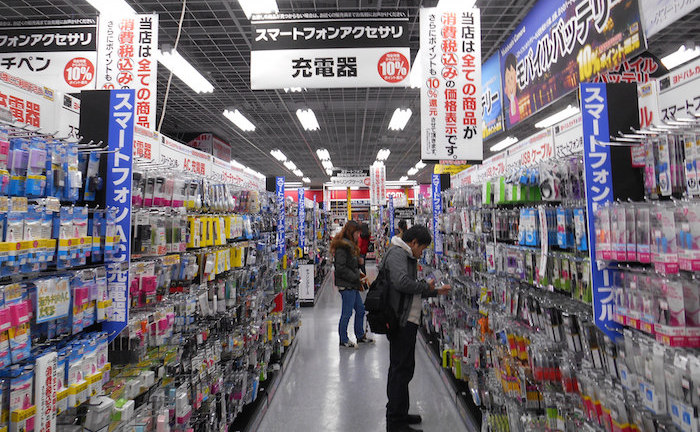
Despite a rainy day and the lack of subtitles, we had fun at Universal Studios Japan - a surreal world where Hogwarts is at walking distance of Hello Kitty’s Mansion. HK was also featured on the train line that got us to the venue.
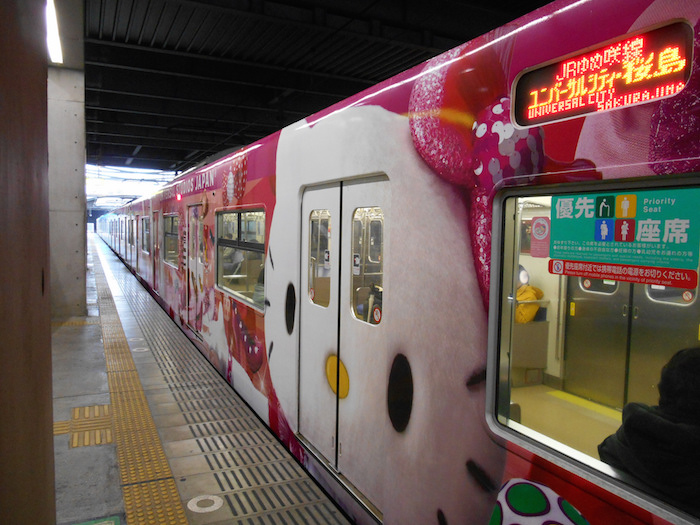
Another culture clash was getting to a sober, classic construction like Osaka Castle through the middle of the otherwise flashy Umeda neighbourhood. We’d soon learn that such a combination is quite commonplace in Japan.
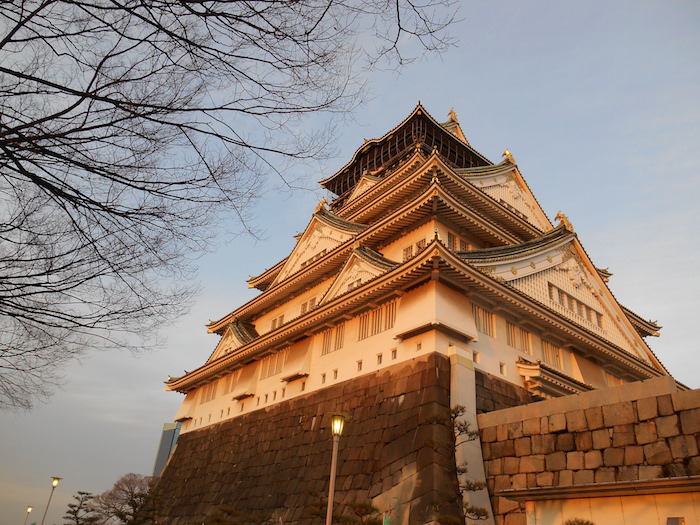
Our last day was on Dotonbori, the colorful entertainment district. Packed with nice places to eat, little shrines, variety stores and amusements of all kinds, it got me hilariously tricked by an ice cream magician. Even the manhole covers there are pleasant sights.

Koyasan
Naming both the mountain gathering and the plateau atop them, Kouya is the birthplace of Japanese Shingon Buddhism, harbouring a myriad of beautiful temples and shrines.
Visiting those requires a hand washing purification ritual that can be challenging at near-freezing temperatures. It is, however, a small price to pay for the beauty, history immersion and inner peace.
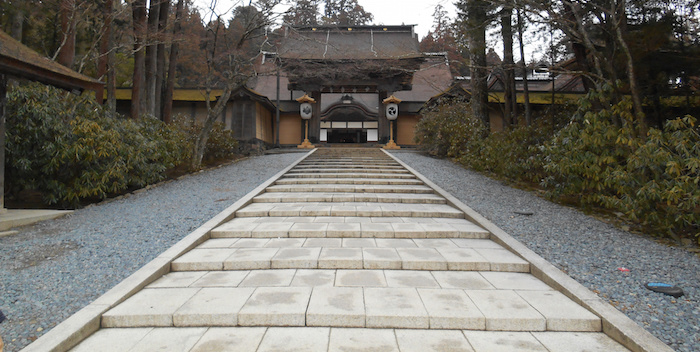
Staying at the Ekoin Monastery was central to the experience: we warmed our feet on a kotatsu, attended a meditation practice, slept in futons on a traditional room and even watched a morning prayer, nurtured by vegetarian meals made with local ingredients. Top-notch.
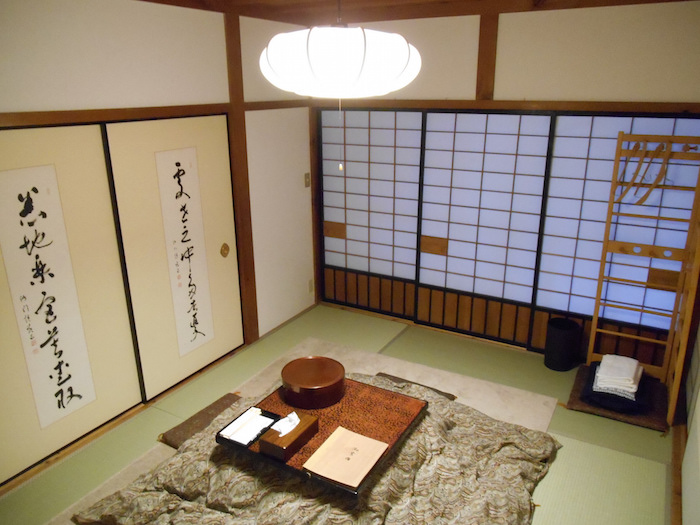
Hiroshima / Miyajima
A single day presented us two sides of Hiroshima: the touching legacy of the nuclear attack, carefully preserved at the Peace Memorial Park (check the museum and fold a paper crane for Sadako); and the food, culture and nightlife of an active city that did not forget the tragedy, but thrived above it.
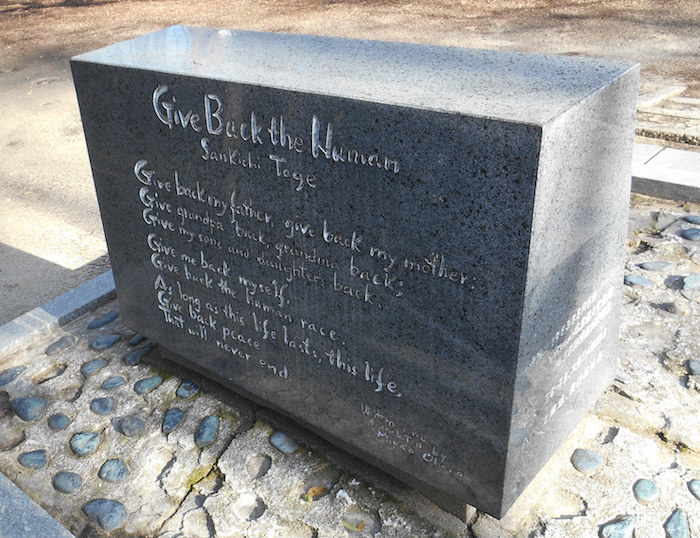
The local okonomiyaki was highly recommended (and we had already missed the Osaka variety). We had a delicious one at NAGATA-YA.
In the second day we hiked after more shrines at Itsukushima - or, as most people call it, Miyajima (shrine island). Its main feature is the gate under which boats (and on low-tide afternoons, lucky pedestrians like us) pass for protection.
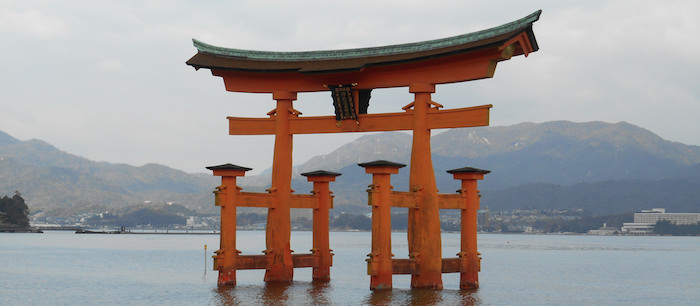
The free-roaming deer are a side show. Very peaceful creatures, but keen to steal snacks from distracted tourists - not a huge problem for them, considering the abundance of food shops. Foodies can appreciate momiji manjyu with all sorts of yummy fillings, and eat while watching the curious baking machines.
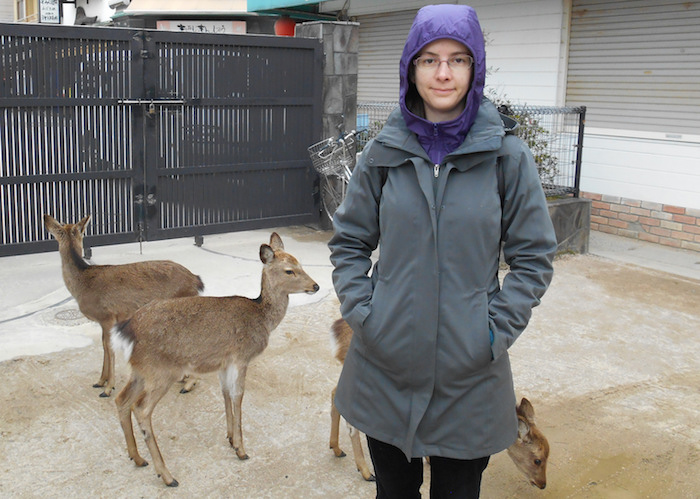
Kyoto
We went to Nijo Castle, home to the last shogunate on the former imperial capital. Its main house brings historical context and a glimpse of the daily life during the power transfer from the Shoguns to the Emperor. We also visited Fushimi Inari, famous for its multitude of portals, but I was more impressed by the majestic messenger foxes.

The travel group did other historical visits, but I fast-forwarded a few centuries towards Kyoto International Manga Museum, which hosts more than 50,000 comic books that can be read freely on the premises (including the garden, weather permiting).
A central gallery hosts samples of the most representative titles for each year, from the late 50s to mid-2000s. Outside of it you find full collections organized by genre, walls of foreign manga editions and a couple of special exibitions and events.

The featured exibition was Black Jack Stories; Doctors’ Choice, in which panels depict sixteen practicing doctors commenting their favorite scenes of the manga and describing how the heroic surgeon written and drawn by Osamu Tezuka (who held a medical degree himself) influenced their career choice. Quite touching.
They are a bit sensitive to photography (due to copyright concerns), but you can take pictures of the garden, of the entrance, of the current exibiton and of Tezuka’s Hinotori (Phoenix) that symbolizes the museum.

Hakone
Our budget-oriented choice of date precluded a postcard-view of the neighbouring Mt. Fuji. Still, it was fun to take a cable car to Owakundani, where we could eat Kuro Tamago: eggs blackened by the volcanic springs where they are boiled, believed to extend your life by seven years if you eat one.

Strangely, you can eat 2 for 14 years, but 3 is “not advised” by the legend. Also keep in mind the warnings about how sulfurous mist can be harmful if breathen for long periods of time (and that’s no legend). Life and death aside, the black theme takes over everything, from ice creams to Hello Kitty.

The ryokan was, in some senses, even more traditional than the monastery: no shoes from the entrance on, full-time yukata encouraged (with several style options for female ones), comprehensive kaiseki (traditional-style dinner) and a huge rooftop onsen (public bath).
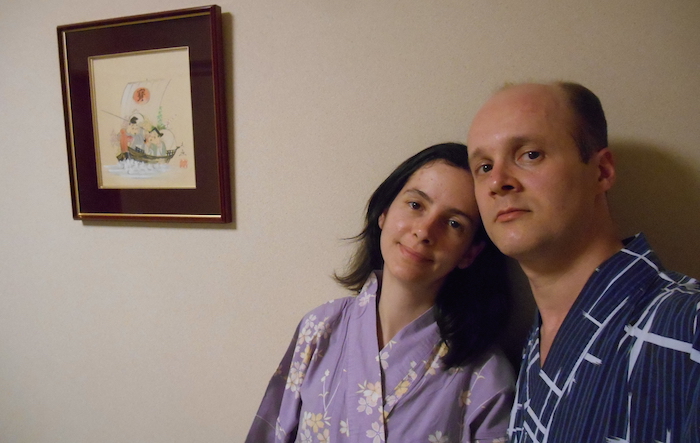
After you beat the initial awkardness of collective nudity in a non-sensual environment, it’s incredibly relaxing. There is a bit of onsen ettiquete that one should be aware of (those years reading manga were useful, after all). I lost track of time there.
Tokyo
Our last destination, Tokyo lives up to its fame - from the massive subway network to the enticing specialized neighbourhoods and the massive crowds gathering around them.
We had better times with “classic” Japan in the other cities (in short: skip the Tokyo Imperial Palace), so I’d recommend focusing on modern venues - of which Tokyo is at the forefront. The Tokyo Metropolitan Government Building gives you a free-as-in-beer glimpse of the overwhelming city.

One can simply get lost in the neighbourhoods that suit your tastes - we bumped into nice places like First Avenue Tokyo Station (two words: Ultraman Shop) and Kitte’s rooftop garden that way. Planning, however, was key to amusing experiences such as:
Akihabara / Nanako Broadway
If you are remotely interested in any sort of Japanese media or collectible, there is a store for you in Akihabara. The so-called “electric city” is a real otaku paradise, and it gets even better if you figure out beforehand the venues you want to visit (this e-book may help).
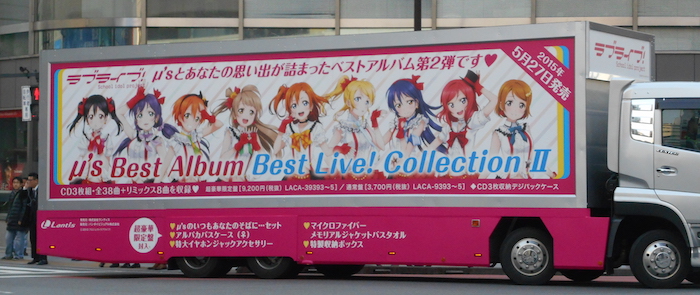
As a retrogaming enthusiast, Super Potato was my pick. It isn’t much bigger than, say, Toronto’s A & C, but you’ll find lots of Japanese exclusives like the Famicom Disk System, MSX stuff (mainly carts, but a few systems also), a free-to-play Virtual Boy and even non-Japanese systems that were popular there (almost bought myself a WonderSwan).
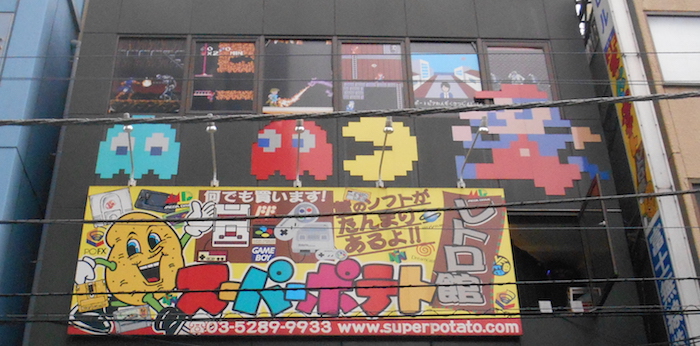
For comics, action figures, cosplay stuff and the like, Nanako Browadway was an unexpected alternative. Among the numerous speciality shops, Mandarake [sic] had insanely cheap, top-quality second-hand manga, carefully sorted by publisher/author.

An entire wall dedicated to Osamu Tezuka comics earned my respect (and lots of my money). They also had several of the easy to read manga recommendations I was looking for. If one needs encouragement to learn Japanese, this is the place.
Robot Restaurant
Robot Restaurant is almost impossible to describe, but its website shows a little glimpse. Ignore the “restaurant” part (go for the chips and popcorn) and enjoy the insane psychodelic mashup of group dances, exotic costumes, robot boxing, forest creatures, animatronic animal battles, colorful lights, heavy metal and pop iconography.
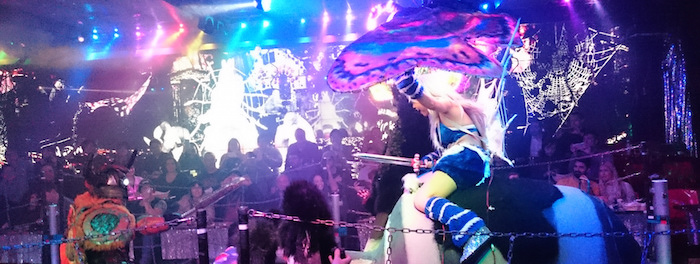
Everything is English-translated, and a reservation is recommended, but we could get in without one. It’s easy to find ¥1000 discount coupons in hotel/airport guides. Be warned: your mind will be numb for the rest of the night. Mine still feels the occasional seizure.
Diver City (Gundam Statue)
This mall is a bit removed from the city, but the subway gets you quickly there through the “Tokyo Teleport Station” - how cool is that? Food is good and shops are ok, but the reason to come is the giant Mobile Suit (“robot”, for the non-initiated) statue outside.

The scheduled projection shows aren’t much interesting if you don’t understand Japanese, but the statue is quite impressive on itself - in particular for being right in the middle of a “normal” city (and not, say, in an amusement park).
Mimi Souji
I’ve done ear wax reomval at a doctor’s office, with no emotion other than the relief of recovering hearing or ceasing earache. Mimi souji has the same goal, but is done in a motherly, tender way (but using tools that would make my doctor scream). Yamamoto Mimikakiten appeared on online videos and CNN Travel, so I gave it a try.
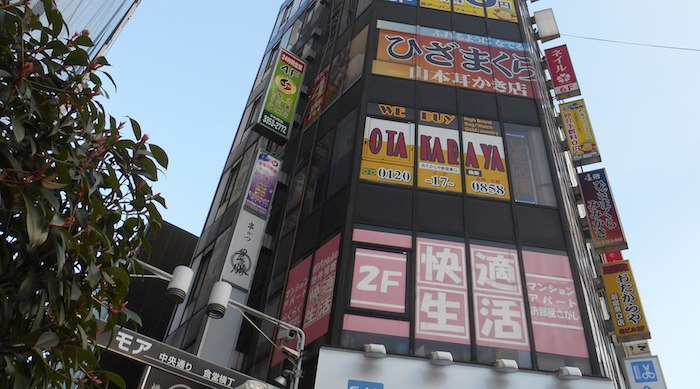
After some small talk over tea, the gentle Kimono-clad young woman asked me to put my head on her lap, where she massaged my ear with the tips of her fingers (a first for me, quite relaxing) while putting some cream in the ear (also veeeery soothing). I was approaching relaxation nirvana when she laid a soft, warm towel over my eyes and…
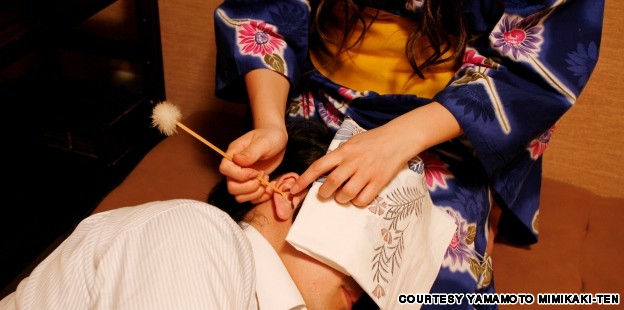
… there was something… somewhere… INSIDE ME!!!!
It wasn’t painful at all - just quite odd to feel a part of your body that you barely acknowledged to exist being gently, but firmly manipulated as she slowly removed the wax buildup. The tea and ear massage paid off: thanks to them, I was less worried with the prospect of eardrum puncturing than I’d usually be, and just went along.
She repeated the process on the other ear, finishing with a shoulder massage. In 30 minutes I lost my ear channel virginity (there is a 1h option), and the result was as good as the clinic version, but much more relaxing and painless. Not sure if I’d become a regular (I trust the doctor a bit more), but it was quite an experience.
Random Topics
Food
We are no strangers to Japanese food outside Japan, but this was the time for the “real” thing. So we tried a bit of everything: from a complex omakase-style meal by celebrity Chef Narisawa to cheap places where you and the salarymen buy tickets on a machine and exchange them for ramen, udon, tonkatsu and other “fast food”.
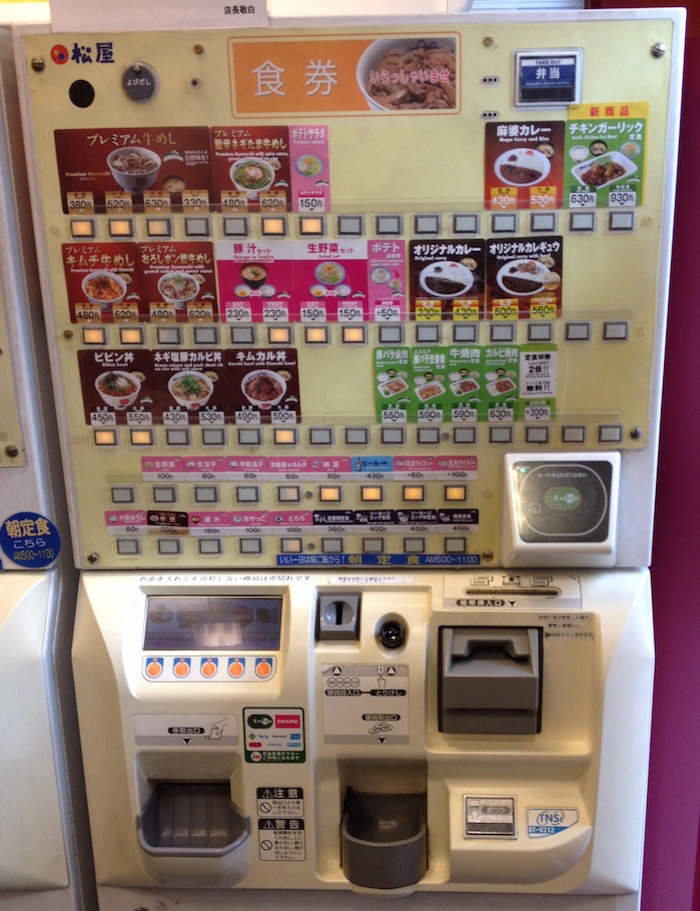
Bakeries are also a nice option for morning meals, and also for eating on-the-go. You just need to dig a bit to find non-sweet, non-creamy bread (unless that is your thing, of course). Also keep one eye open for street food (like Gindako’s takoyaki) and another one for manjyuu shops.
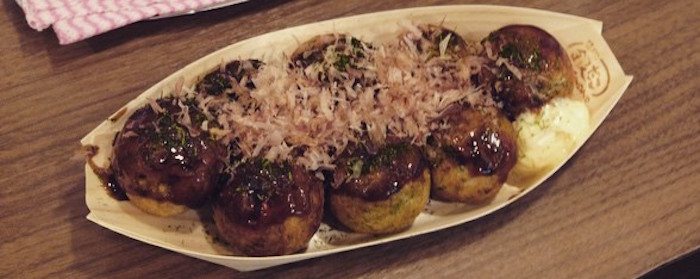
A ryokan usually serves Japanese-style dinner and breakfast, but western hotels may offer reasonably-priced breakfast buffets with both eastern and western food. And don’t be afraid of wasting your trip if you order the ocasional western dish - more often than not, it will be prepared local-style (hint: hamburger).

If you are on a budget (or feeling adventurous), “dollar” shops offer all sorts of industrialized junk food for as low as ¥108 (¥100 + 8% taxes). Not everything is awesome, but I had great wins with pancakes, senbei and crazy-flavoured Pocky at ridiculous prices.
The famous vending machines have a bit of everything, but beverages are still their best application. Warm (あたたかい) and cold (つめたい) ones are identified by red and green labels. Hot coffee-and-milk available everywhere at the touch of a button with no lines would make Canadian winters easier to put up with, if you want my opinion…
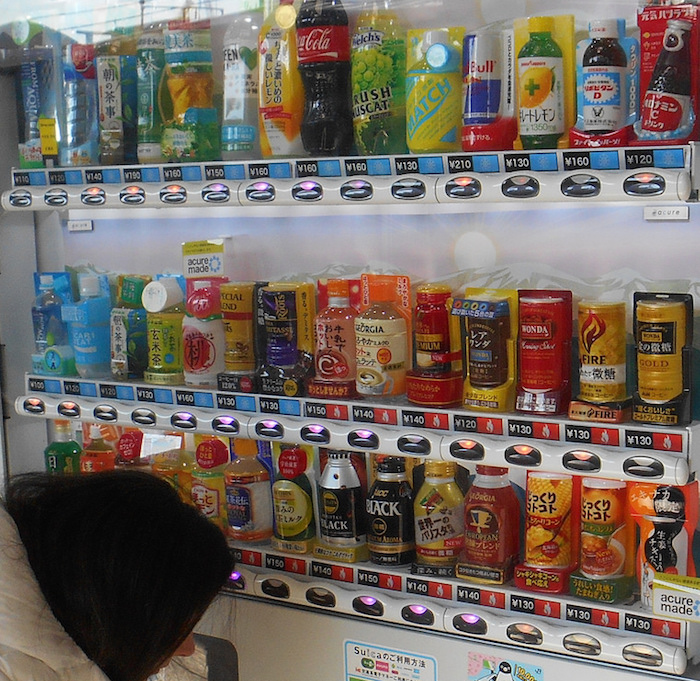
Arcades and Dance Dance Revolution
The bigger the city, the more amusement machine buildings you will find. That’s correct: an entire building dedicated to them, usually with each floor having a different style of machines: claw crane, medal, pachinko, online, retro, simulator, music games, you name it. And several of those have retrogamer-enticing brands, like Taito Station or Club Sega. Nerdgasms ensue.

We got hypnotized by Super Mario Fujishi No Kokoro Party 2, but despite watching for some time, could not figure how those medal/catcher machines machines work (not that you need to, it seems), and decided not to play. Also, everyone knows what I was looking for: Dance Dance Revolution!

DDR is alive in Japan - not as much as in the 2000s, of course, but any decent arcade center had the newest version (a Japan exclusive) in pristine state (arrows working 100%; excellent sound). Living its glory days again in Osaka, Hiroshima and several Tokyo locations was my personal Rocky VI.
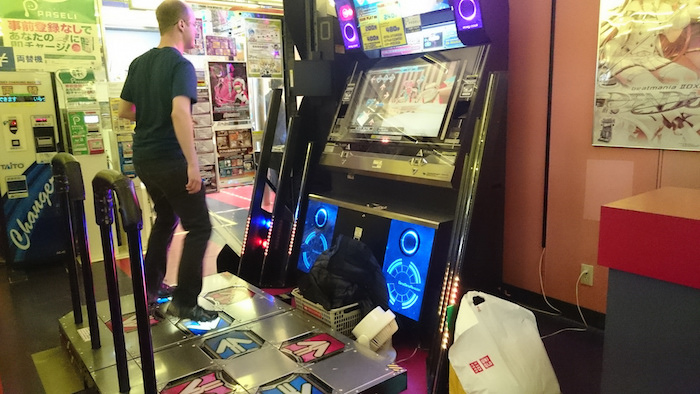
Music games on custom hardware are quite popular there. I tried Groove Coaster (think Vib-Ribbon meets Geometry Wars) and Jubeat. Cooler kids bring their own headphones - all those games have jacks, and a few even come with (optional) phones. Also had fun on Konami’s Dance Evolution (suprisingly, given how dull the XBox 360 version was) and REFLEC BEAT.
By the way, Canada’s App Store has iOS versions of Jubeat (renamed Jukebeat), REFLEC BEAT and Groove Coaster. Music Non Stop!
Finally, we had a great 2-player experience with Miraidagakki FutureTomTom, a new version of Konami’s taiko game that inserts your image into the game animations (adding with silly hats, masks and props in realtime). Once the game is over, you can scan a QR code and get a picture of the “best” moments. How cool is that?
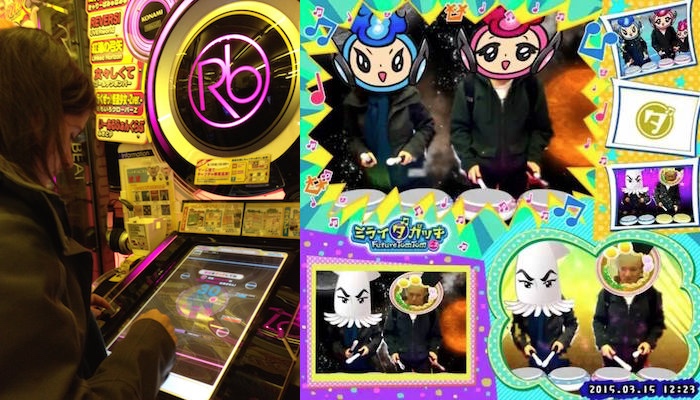
Transportation
Every city we visited had decent public transportation. Of course it is crowded in rush hour (and yes, the white-gloved subway packer is real). Tokyo’s system, in particular, is immense: with 290 subway stations and 9MM users/day, it makes the Mickey Mouse cartoon depiction credible.

The sheer size of Tokyo’s system can be daunting, but you can visit all the famous neighbourhoods just using the Yamanote train line, which connects JR East stations available in all of them (and also the lesser-knowns you may want to explore) in a circular fashion. Easy to board and nice to look around.
Price will vary according to the to distance travelled. You need to purchase a ticket from a machine with the correct value (hint: Google Maps will tell you when you search a route) and inserting it upon entering and leaving stations. There are fare adjustment booths in case you miscalculate.
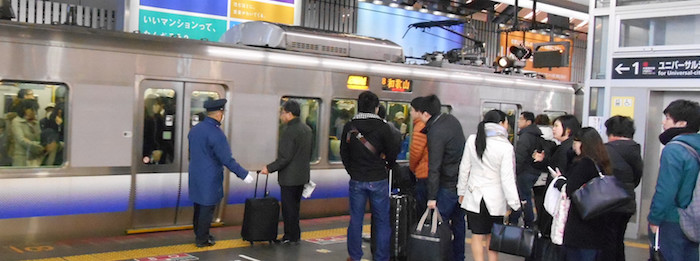
All ticket machines have an “English” button - some will change language, others will just show a help screen. But don’t panic: just insert enough money and press the button with the desired amount. Most cities offer cards that you can fill with credits and just tap on entrance/exit. In Tokyo we used Suica, which also worked on some restaurants, shops and vending machines.
The arrival connection (Tokyo-Osaka) was cheaper by plane than by shinkansen (bullet train). But after trying these comfortable, hassle-free and silent marvels, I would favor them over airplanes anytime, no matter the cost. The Japan Rail Pass allows free usage of most shinkansen (and the JR-operated lines in Tokyo, like Yamanote), but keep in mind that it is quite expensive and must be bought before arriving in Japan.

Cards and pre-purchased tickets are your best choice, but some buses accept cash. We took one like that in Kyoto, which even had a change machine - but it was a bit hard to figure the change slot from the payment one. Drivers often don’t speak English, so we had to figure it out on our own. Be prepared for those tight spots, but otherwise you can rely on public transportation for everything.
Hints and Curiosities
-
Every hotel where we stayed had yukatas ready and daily changed for us, regardless of being a Japanese or western style hotel. So don’t pack nightgowns or PJs, unless you really can’t sleep in something else.
-
Dinner and breakfast are usually available (included or for a fee) in traditional hotels. Western-style ones offer breakfast buffets which often include both local and western food - a double win that I never passed.
-
Some people like to be offline while on vacation. For the rest of us, this b-mobile SIM card was delivered to my hotel and had great coverage in every city, all for a reasonable price. Only downside was that my iPhone 4S took almost a minute to get online whenever it left airplane mode. An alternative is to buy a card at Yodobashi (cheaper, but subject to availability). Hotels have decent Wi-Fi, but being able to check maps/routes and post pictures while on the road is a game changer.

-
Despite the abundance of vending machines and the Japanese obsession with packaging, trash cans are paradoxically hard to find! I strongly suggest stashing one of the bazillion plastic bags you’ll get on your backpack/purse for personal littering.
-
Same thing for napkins: quite often restaurants didn’t have them (or at least not at an obvious place). A pocket-size pack of tissues saved me quite a few times. Also, you can find Sentai-illustrated ones like these at any drugstore if you don’t mind the small size.
-
As board game aficionados, we couldn’t help but notice the similarities between our experiences and the carefully produced Tokaido board game (play it if you haven’t yet). Our last journey was indeed from Kyoto to Edo (aka Tokyo), but the bullet train is a bit different from the classic route. We did peek at the surroundings of Tokaido Street, for what it’s worth…
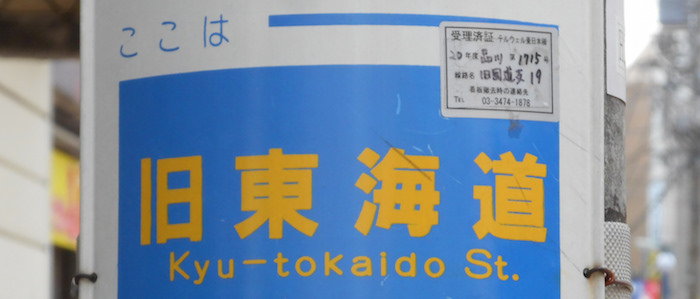
-
You can do fine with English and pantomime, but don’t expect people to speak English - most only know the basics, some not even that. As with any foreign country, a few key phrases take you far. And learning katakana (the “alphabet” they use to write loan words) will reveal a surprising number of familiar words when you arrive there.
-
Heated taps in public washrooms aren’t as ubiquitous as in Canada. The painful memories of the cold hand washing on the shrines’ fountains made us jokingly refer to heat-less washrooms as “purifying” ones.
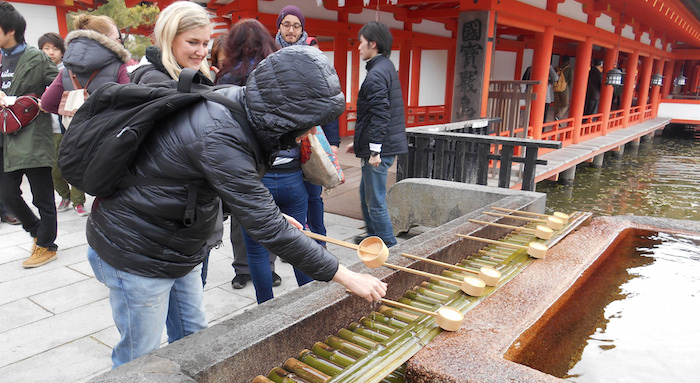
-
Expect smaller portions. Japanese food is about variety, not quantity. Drink sizes, in particular, surprised us - out of worldwide food chains, it wasn’t hard to find the largest juice size to be the size of the smallest Starbucks drink. Water is usually free.
-
You’ll be loudly and repeatedly irasshaimased everywhere, and are not expected to respond to the ubiquous yell, I mean, salutation. A discrete nod is as far as a mild-mannered Canadian resident can go to supress the inner guilt of not replying to a greeting. Service workers take pride in their job - trying to “out-polite” them only makes their life harder.

That’s it (although I may add a few tips as I remember them). Thanks Glorfind3l for Gundam clarifications.
Feel free to check the pictures of the trip on Flickr.
Comments
Glorfind3l
Btw it's not the Gundam wing Statue, it's Gundam Rx-78, the first gundam ever appeared ;)
chesterbr
Double win: you corrected and out-nerd-ed me in a single shot! :-)
Let me wrap my lame excuse as a cultural note: reducing the Gundam universe to Gundam Wing is a common mistake among Brazilians (myself included), because Mobile Suit Gundam Wing is the only[1] Gundam universe adaptation broadcasted on Brazilian TV.
I think I'll change the reference to "Gundam Statue", as it's the name used on the English version of the DiverCity website[2]. Thanks for the remark!
P.S.: Any OVA/series suggestions for someone willing to catch up on Gundam while practicing Japanese listening? :-)
[1] At least at the time I watched TV there. Wikipedia (PT) backs it: http://pt.wikipedia.org/wik...
[2] http://www.divercity-tokyo....